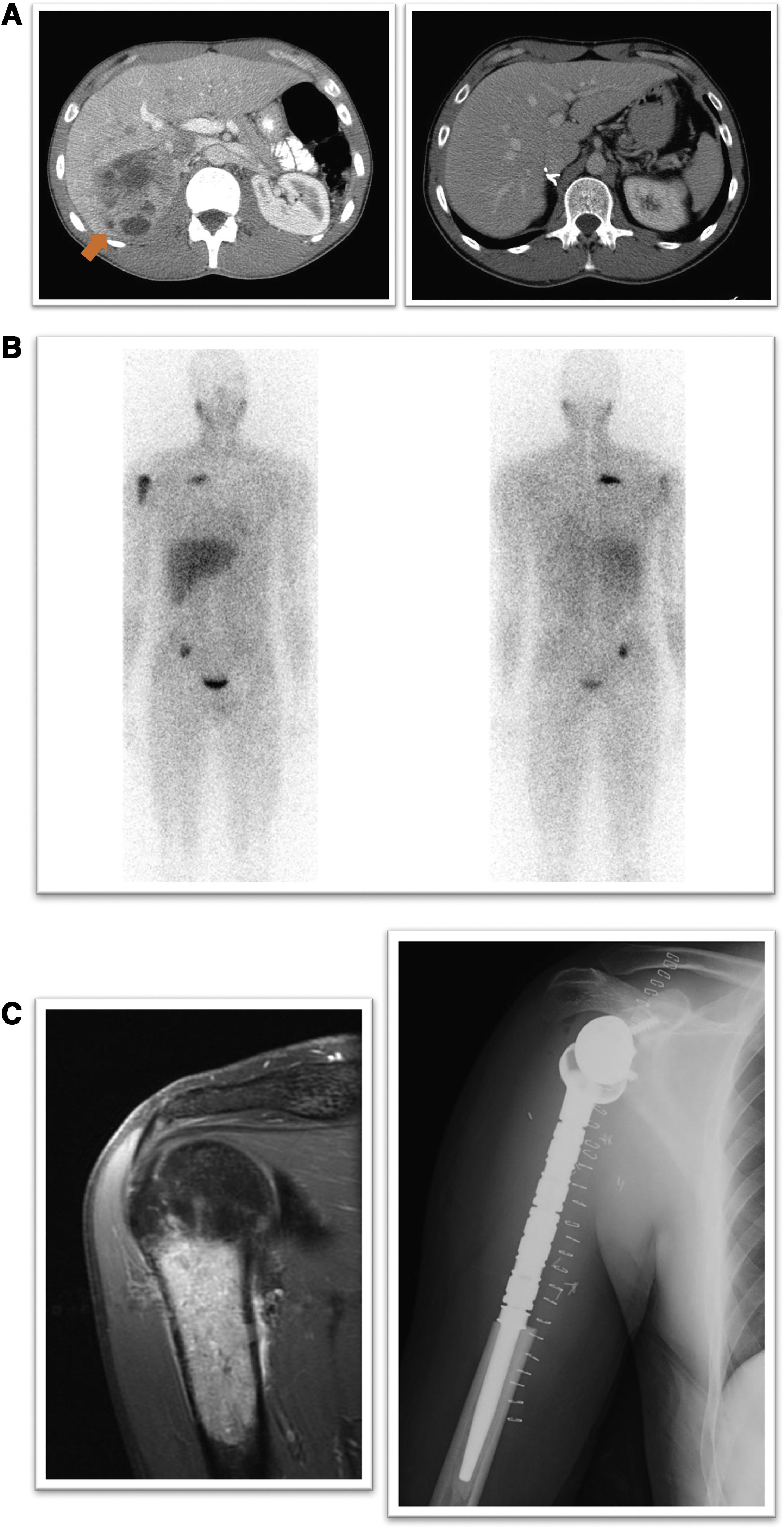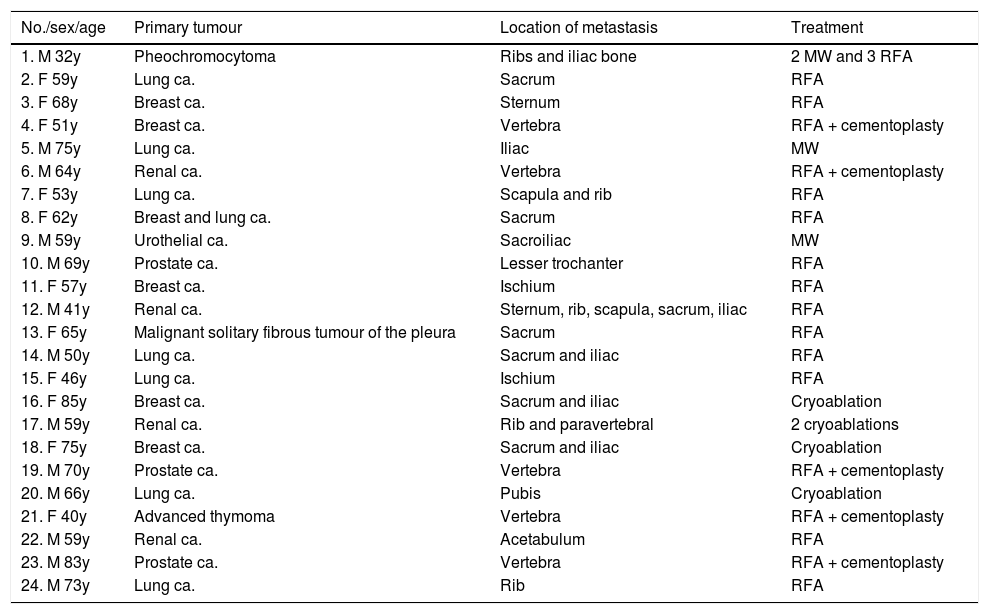Interventional radiology is playing an increasingly important role in the local treatment of bone metastases; this treatment is usually done with palliative intent, although in selected patients it can be done with curative intent. Two main groups of techniques are available.
The first group, centered on bone consolidation, includes osteoplasty/vertebroplasty, in which polymethyl methacrylate (PMMA) is injected to reinforce the bone and relieve pain, and percutaneous osteosynthesis, in which fractures with nondisplaced or minimally bone fragments are fixed in place with screws. The second group centers on tumor ablation. tumor ablation refers to the destruction of tumor tissue by the instillation of alcohol or by other means. Thermoablation is the preferred technique in musculoskeletal tumors because it allows for greater control of ablation. Thermoablation can be done with radiofrequency, in which the application of a high frequency (450 Hz–600 Hz) alternating wave to the tumor-bone interface achieves high temperatures, resulting in coagulative necrosis. Another thermoablation technique uses microwaves, applying electromagnetic waves in an approximate range of 900 MHz–2450 MHz through an antenna that is placed directly in the core of the tumor, stimulating the movement of molecules to generate heat and thus resulting in coagulative necrosis. Cryoablation destroys tumor tissue by applying extreme cold. A more recent, noninvasive technique, magnetic resonance-guided focused ultrasound surgery (MRgFUS), focuses an ultrasound beam from a transducer placed on the patient's skin on the target lesion, where the waves’ mechanical energy is converted into thermal energy (65 °C–85 °C). Treatment should be planned by a multidisciplinary team. Treatment can be done with curative or palliative intent. Once the patient is selected, a preprocedural workup should be done to determine the most appropriate technique based on a series of factors. During the procedure, protective measures must be taken and the patient must be closely monitored. After the procedure, patients must be followed up.
La radiología intervencionista tiene un papel cada vez más importante en el tratamiento local, generalmente con intención paliativa, de las metástasis óseas, aunque en pacientes seleccionados puede realizarse con intención curativa.
Disponemos de dos grupos de técnicas principales, de las cuales unas se centran en la consolidación del hueso: la osteoplastia/vertebroplastia, que consiste en la inyección de polimetilmetacrilato para reforzar el hueso y mejorar el dolor, y la osteosíntesis percutánea, que consiste en la fijación mediante tornillos de las fracturas mínimamente/no desplazadas para su consolidación.
Por otro lado, tenemos la ablación tumoral, que nos permitirá la destrucción tumoral, ya sea por instilación de alcohol o a través de la termoablación. La termoablación es la preferida en musculoesquelético, ya que es una ablación más controlada. Dentro de este grupo tenemos: la radiofrecuencia, que aplica una onda de alta frecuencia alternante (450–600 Hz) en la interfase tumor-hueso que alcanza altas temperaturas y necrosis coagulativa; la ablación por microondas, que aplica ondas electromagnéticas (aproximadamente 900 y 2450 MHz) a través de una antena que se coloca directamente en el seno del tumor, produciendo agitación molecular y calor que provoca una necrosis coagulativa; la crioablación, que consiste en la aplicación de un frío extremo para destruir tumores, y, por último, la MRgFUS (Magnetic Resonance-guided focused ultrasound surgery), técnica no invasiva que funciona como un haz de ultrasonidos generado por el transductor colocado sobre la piel del paciente, concentrándose en la lesión diana donde la energía mecánica se convierte en energía térmica (65–85 °C).
El plan terapéutico ha de ser determinado por un equipo multidisciplinar, y puede tener intención paliativa o curativa. Una vez seleccionado el paciente, se realizará un estudio preprocedimiento y se decidirá cuál será la técnica más adecuada en función de una serie de factores. Durante el procedimiento se tomarán medidas de protección y monitorizacióny finalmente se realizará un seguimiento posprocedimiento.
Artículo
Comprando el artículo el PDF del mismo podrá ser descargado
Precio 19,34 €
Comprar ahora













